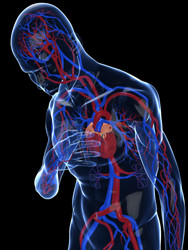Heartening news for the heart-sick
The EU-funded 'Personalized diagnostics and treatment of high risk coronary artery disease patients' (RISKYCAD)(opens in new window) project will identify biomarkers and optimise risk estimation models to identify individuals at high risk of a potentially fatal MI or stroke. Development of effective and tailored therapeutic strategies to meet an individual patient's needs is the ultimate goal. Within the first 18 months researchers made significant progress. Besides genotyping 50 % of the Ludwigshafen Risk and Cardiovascular Health (LURIC) cohort, they also completed a pilot study on circulating microRNA (miRNA) in 24 plasma samples. Sample analysis is ongoing to identify miRNA and lipidomic biomarkers for risk stratification. Biomarker findings from the LURIC cohort will later be validated using samples from cohorts like the Finnish COROGENE study. Healthy and low- and high-risk CAD individuals were recruited for the study and induced pluripotent stem cells (iPS cells) from skin fibroblasts are being generated. Researchers have already developed methods for differentiating 16 iPS cell lines into hepatocytes. These iPS cell-based human models will then be used to identify vulnerable CAD patients through metabolic aberrations in their lipidomic profile. RISKYCAD established and characterised mouse models of coronary atherosclerosis and plaque vulnerability. They are also developing new mouse models of CAD with selective gene expression, such as floxed SR-BI mice. They also developed BIO-VILCAD-SCORE, a new risk stratification algorithm for stable CAD. Researchers developed methodologies and screened formulations to effectively deliver antisense DNA and small interfering RNA oligonucleotides into the liver and atherosclerotic plaques. A proprietary analytical platform called COSS (Clinical Outcomes Search Space) is being used to find links between drugs, molecular targets, pathways, adverse events and diseases. This should generate several promising lead compounds that can be tested in disease-relevant pre-clinical mouse models and cells. Preliminary testing using tranilast, an off-patent anti-allergic drug, has shown promising results. Millions of people in the EU die from cardiovascular disease complications. Project activities should enable the generation of clinically applicable risk estimation models and distinct biomarkers for such patients. Identifying and tailoring therapy for patients at high risk for cardiovascular complications promises to considerably improve patient outcomes and enhance their quality of life.







